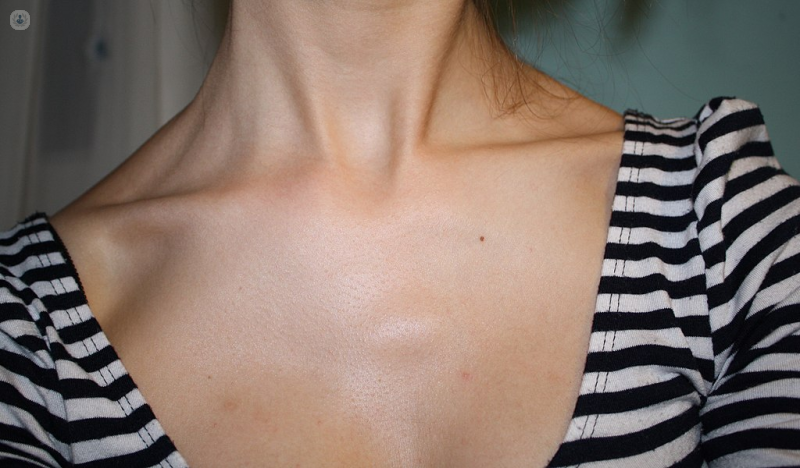


What is a clavicle fracture?
The clavicle is the long, thin bone located in the upper chest, between the sternum and the shoulder. Its function is to join the upper limbs with the thorax and keep the shoulders aligned.
Clavicle fracture, or broken collarbone, occurs when the bone is broken. An injury that causes the clavicle to be broken can also cause the clavicle to be dislocated or the neighbouring acromioclavicular joint to dislocate.

What are the symptoms of a clavicle fracture?
If the fracture is mild, the main symptoms are:
- pain in the fractured bone area
- a feeling that the shoulder could be dislocated
- difficulty and pain when moving the shoulder or arm
- bruising, swelling or a bulge in the clavicle
- crunching or creaking noise when lifting the arm
If the fracture is more severe you may notice:
- significant irregularity in the clavicle area
- lack of sensitivity or tingling sensation in the arm or the fingers of the hand
What causes a clavicle fracture?
A clavicle fracture is almost always caused by a violent impact on the arm extended in a fall or by a fall directly on the shoulder itself. It is more frequent in children, since these bones do not harden until adulthood.
How is a clavicle fracture diagnosed?
A clavicle fracture requires a physical examination and imaging tests. In the examination, the doctor will ask you how the injury occurred and will examine your shoulder to see if there are any irregularities. An X-ray can determine whether the clavicle has fractured and whether any other damage has taken place.
What is the treatment for a clavicle fracture?
In many cases, the clavicle can heal with surgical intervention. Treatment involves:
- medication to reduce pain and swelling
- keeping your arm supported in a sling
- exercises to gradually build up the mobility in your shoulder as it heals
It is important to see the doctor regularly for follow-up scans to check the clavicle is healing in the right way. If the bone does not heal correctly, a large bump can form over the clavicle, and this may take many years to subside.
Surgery is indicated in fractures that involve a displacement of the fractured bone. There are several surgical techniques, including the use of needles that are placed through the skin, the placement of plates screwed to the bone or the placement of a long screw inside the fractured bone. After the procedure, the arm must be placed in a sling for at least a few days, and no daily activities or weight lifting can be carried out for four to six weeks.